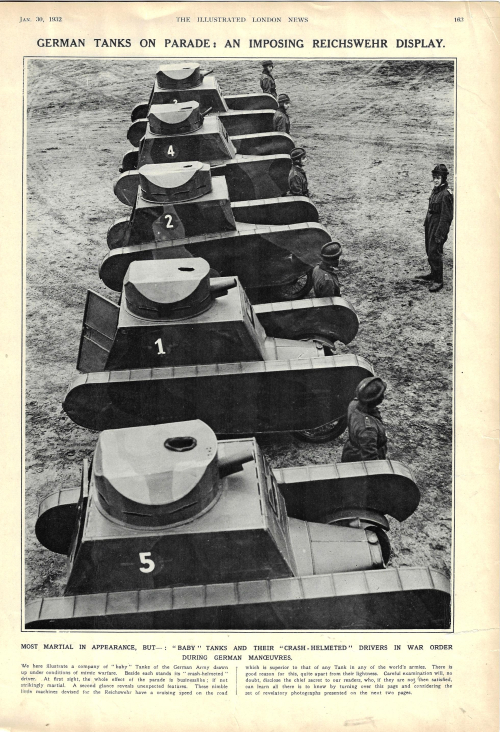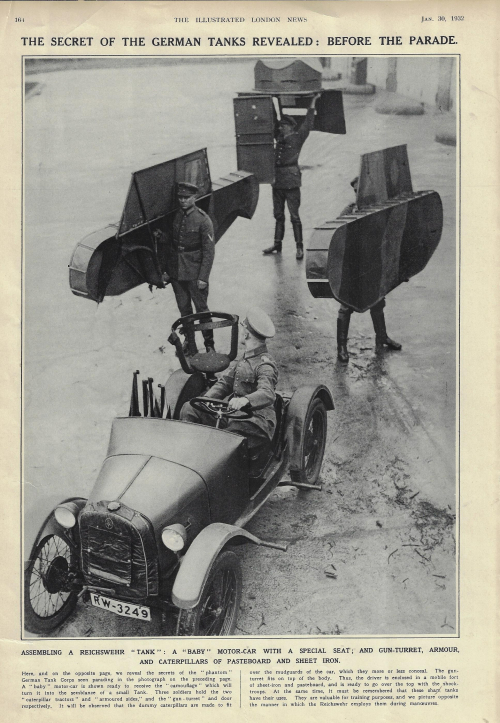JF Ptak Science Books Quick Post
The folks over at the Illustrated London News were having a bit of a sotto voce chuckle at the expense of what was left of the German military's tank corps. No doubt its readers were momentarily surprised and probably shocked to see a line of German Reichswehr (the military organization from 1919 to 1935, after which it was the Wehrmacht) tanks--which were prohibited to Germany via Article 171 in the Treaty of Versailles--at least until they sharp-eyed what the "tanks" were or read on in the article. The vehicles were actually just cars fashioned to look like tanks for war games, and that was all. There really wasn't much to laugh about, though, because the clock was definitely running out on the new normal of world affairs.
This picture story appeared in January 1932, 13 years after the Treaty of Versailles and only a year or so before it began to unravel in earnest. Germany--reeling still from the Depression and from the economic hardships and concession placed on it by the treaty, suffering large unemployment and with a disastrous economy--by June of that year had decided to ignore the military restrictions of Versailles and sought to rearm. By July it withdrew from the nearly half-trillion-dollar (in 2017 American dollars) concessions agreement, and started to accumulate funds for a vast new military restructuring program. Hitler lost the presidential election later in '32 but pulled in 38% of the vote and truly began to consolidate power, and a year later he was chancellor with huge Nazi gains in the Reichstag (which would be on fire in another month). In six years came the Anschluss and Czechoslovakia, and in the next year, Poland, and WWII. Seven and a half years from cutout tanks to the Blitzkrieg and Rommel and Guderian. This could well have been the last laugh at the German military.




Comments